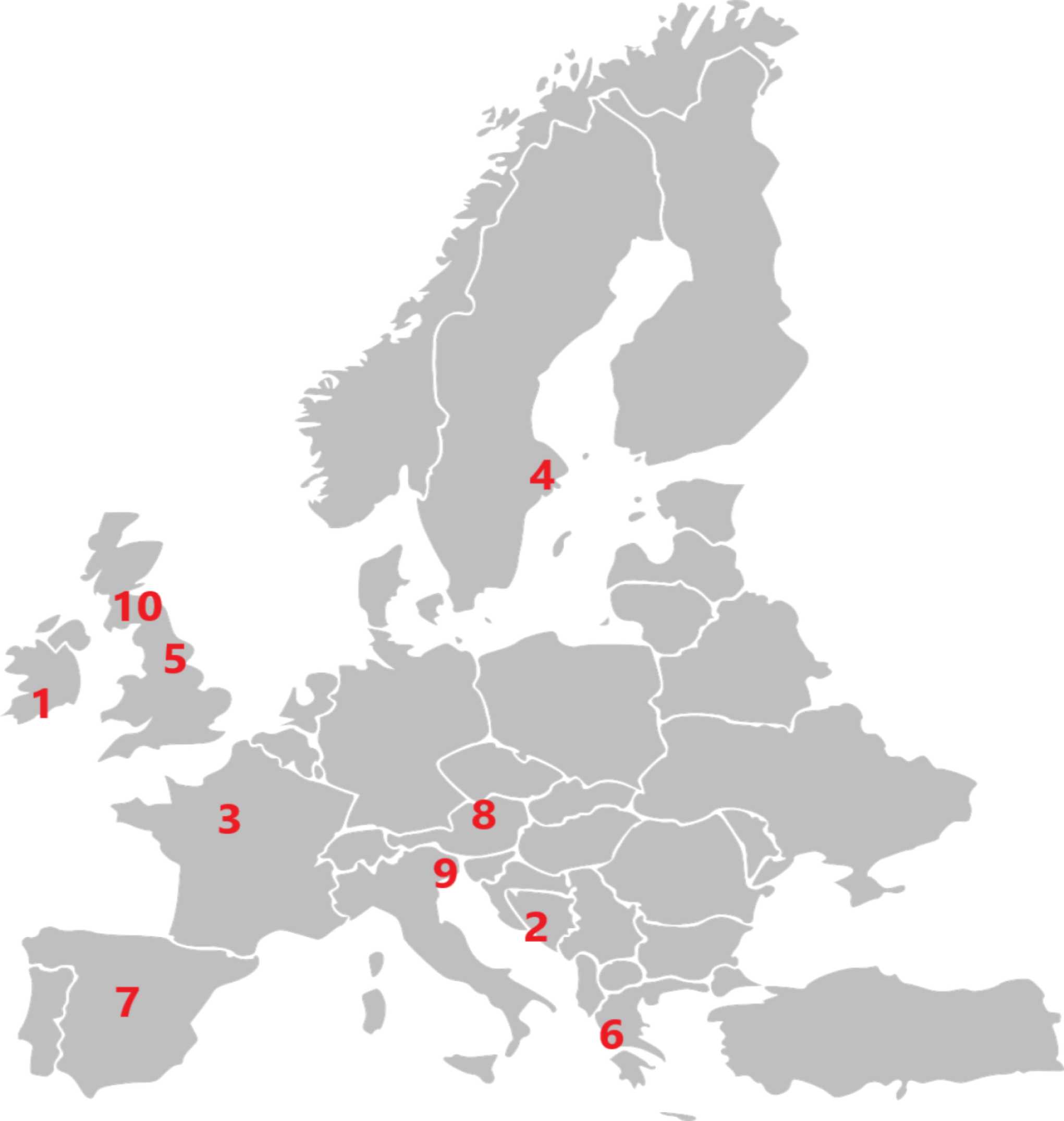
Locating Patron Saints Trivia Quiz
of European Cities
Many cities in Europe have their own patron saint. This map shows the location of ten places and your task is to match the city indicated to the correct saint, mostly official patron saints but with a couple which have much visited shrines in the city.
A label quiz
by rossian.
Estimated time: 3 mins.
